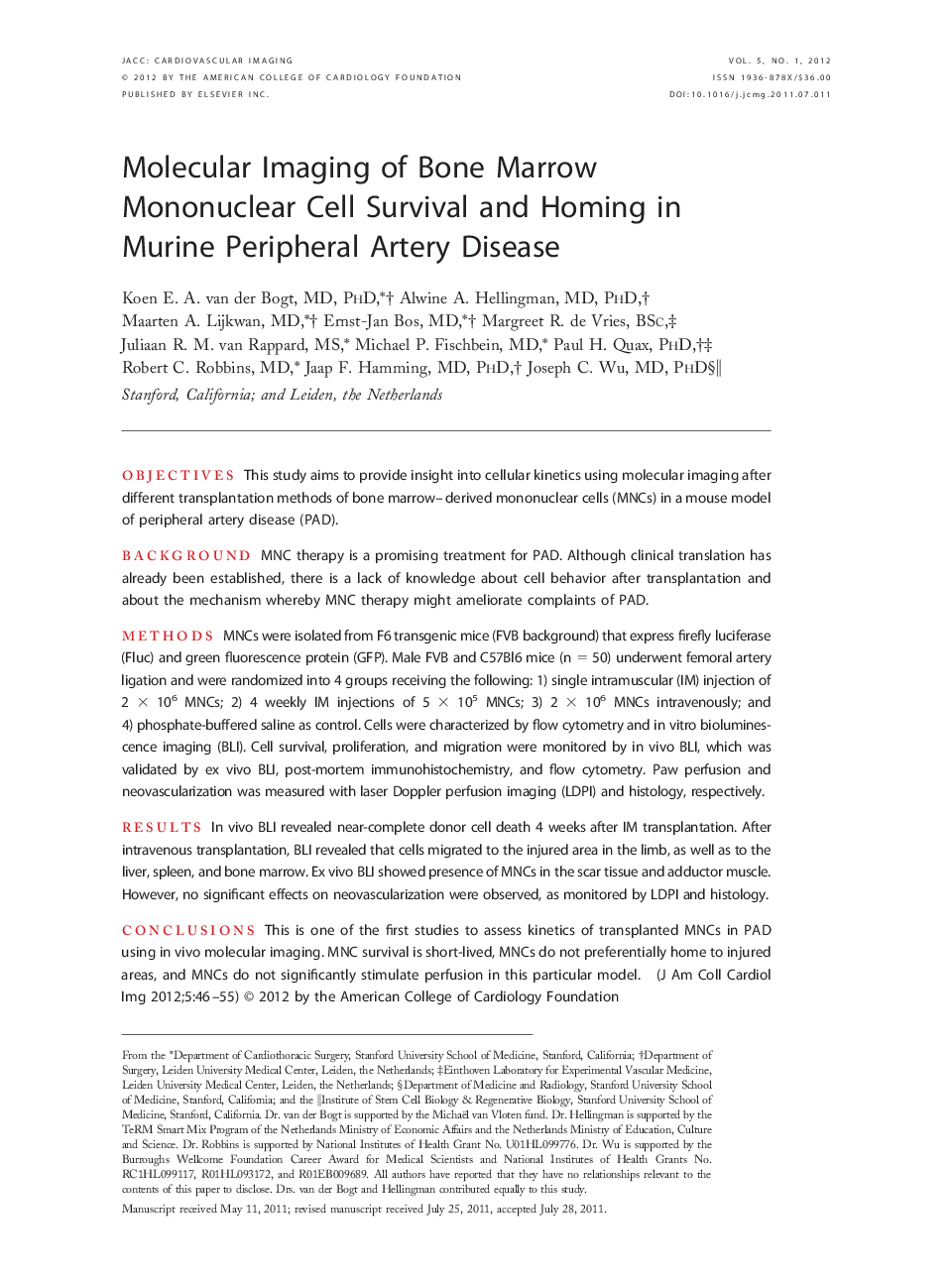| کد مقاله | کد نشریه | سال انتشار | مقاله انگلیسی | نسخه تمام متن |
|---|---|---|---|---|
| 2938683 | 1176951 | 2012 | 10 صفحه PDF | دانلود رایگان |

ObjectivesThis study aims to provide insight into cellular kinetics using molecular imaging after different transplantation methods of bone marrow–derived mononuclear cells (MNCs) in a mouse model of peripheral artery disease (PAD).BackgroundMNC therapy is a promising treatment for PAD. Although clinical translation has already been established, there is a lack of knowledge about cell behavior after transplantation and about the mechanism whereby MNC therapy might ameliorate complaints of PAD.MethodsMNCs were isolated from F6 transgenic mice (FVB background) that express firefly luciferase (Fluc) and green fluorescence protein (GFP). Male FVB and C57Bl6 mice (n = 50) underwent femoral artery ligation and were randomized into 4 groups receiving the following: 1) single intramuscular (IM) injection of 2 × 106 MNCs; 2) 4 weekly IM injections of 5 × 105 MNCs; 3) 2 × 106 MNCs intravenously; and 4) phosphate-buffered saline as control. Cells were characterized by flow cytometry and in vitro bioluminescence imaging (BLI). Cell survival, proliferation, and migration were monitored by in vivo BLI, which was validated by ex vivo BLI, post-mortem immunohistochemistry, and flow cytometry. Paw perfusion and neovascularization was measured with laser Doppler perfusion imaging (LDPI) and histology, respectively.ResultsIn vivo BLI revealed near-complete donor cell death 4 weeks after IM transplantation. After intravenous transplantation, BLI revealed that cells migrated to the injured area in the limb, as well as to the liver, spleen, and bone marrow. Ex vivo BLI showed presence of MNCs in the scar tissue and adductor muscle. However, no significant effects on neovascularization were observed, as monitored by LDPI and histology.ConclusionsThis is one of the first studies to assess kinetics of transplanted MNCs in PAD using in vivo molecular imaging. MNC survival is short-lived, MNCs do not preferentially home to injured areas, and MNCs do not significantly stimulate perfusion in this particular model.
Journal: JACC: Cardiovascular Imaging - Volume 5, Issue 1, January 2012, Pages 46–55